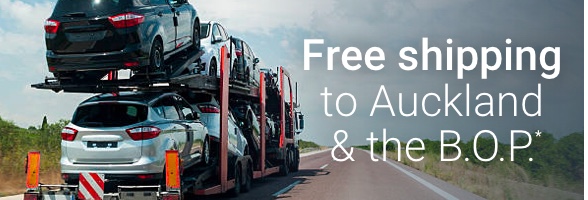Long‑Range EVs: Which Is Right for You — VW ID.4 vs Volvo EC40
Introduction
If you’re looking for an electric vehicle that gives you confidence when travelling longer distances in New Zealand, choosing one with solid range, reliable battery performance, and a good charging ecosystem is key. Two EVs gaining attention are the VW ID.4 and Volvo EC40. In this post, we’ll compare them in depth — range, specs, charging, pros & cons — and help you decide which is better aligned to your needs in NZ.
Understanding “Long Range” in the NZ EV Context
-
In NZ, "long range" generally means being able to comfortably travel 300 km+ in variable conditions (hills, weather, highway).
-
Real‑world range will vary depending on speed, ambient temperature, terrain, load, and driving style.
-
Access to fast chargers, home charging setup, and route planning becomes less crucial with long range EVs making them very easy to live with
VW ID.4 — Specs & Real-World Performance
Range & Battery
Power & Performance
Pros
-
Spacious interior, decent cargo room, good all‑rounder for city + longer trips.
-
Well supported with VW parts and servicing infrastructure in NZ.
-
Strong brand recognition — easier resale value.
Volvo EC40 — Specs & Real-World Performance
Note: The EC40 name is relatively new (Volvo’s EV naming changes). The EC40 is essentially the renamed / updated version of what was the C40 / electric coupe SUV line.
Range & Battery
-
Volvo claims the EC40 has electric range (combined) of up to 577 km (when ideal conditions) on certain variants.
-
In EV Database’s listing, the single motor version has a nominal 82 kWh battery capacity, with real‑world estimates ranging from ~295 km to 615 km depending on variant and conditions.
Power & Performance
Pros & Limitations in NZ Use
Pros:
-
Potential for strong range in favorable conditions, giving flexibility for longer journeys.
-
Volvo’s brand premium and build quality, safety features.
-
Cabin refinement, comfort, and prestige in the EV segment.
Side-by-Side Comparison: ID.4 vs EC40
| Feature |
VW ID.4 |
Volvo EC40 |
| Typical quoted WLTP range |
~519 km (with 77 kWh battery) Volkswagen New Zealand |
Up to 577 km (certain variants) Volvo Cars |
| Real‑world range |
~450‑500 km in mixed driving |
~300‑600 km depending on battery & variant |
| Battery / Motor Options |
77 kWh / single motor, RWD Volkswagen New Zealand+2Volkswagen New Zealand+2 |
82 kWh / single motor, potential twin motor variants EV Database+2EVspecs+2 |
| Power / Torque |
150 kW / 310 Nm Gazley Volkswagen+1 |
~185 kW / 420 Nm (for EC40 single motor) EVspecs |
| Suitability for long trips |
Good option with charging planning |
Very compelling if variants deliver high range |
| Things to verify on used models |
Battery health, warranty, charger compatibility |
Variant type, battery condition, warranty, real range |
Practical Tips for Using Long Range EVs in NZ
-
Plan route by charger availability. Use apps (Powertrip, ChargeNet, PlugShare, etc.) to map DC fast charger stops on highways.
-
Charge to safe buffer. Don’t always run battery flat — maintain buffer (e.g. 10‑20%) for uphill, cold, or emergency margins.
-
Monitor battery degradation. Over time, capacity will shrink; a battery health check or battery warranty is critical on used EVs.
-
Home charging setup is key. A reliable AC charger (like 7–11 kW) allows overnight top-ups.
-
Adjust driving style. Moderate speed, regenerative braking, avoiding sudden acceleration all improve efficiency.
-
Consider weather & terrain. NZ’s hills, winters, and varying climates can reduce range relative to ideal numbers.
Which One Might Be Better for You in NZ?
-
Go for ID.4 if you want a proven, well-supported EV with solid infrastructure, easier parts servicing and a reliable all‑round package.
-
Choose EC40 if you can secure a variant with high quoted range, want the brand prestige and are confident about variant correctness and battery health.
-
For many buyers, real-world performance, charging infrastructure, and battery condition will matter more than headline specs.
-
Always inspect battery condition, charging performance, warranty, and real‑world test drives.
FAQs
Q1: Does WLTP range mean what I’ll get in NZ?
No — WLTP is a lab standard. In real driving (especially at speed, uphill, cold), you'll likely see 15–30% less than the quoted WLTP range.
Q2: How long does a full charge take on these EVs?
On a fast DC charger (e.g. 150 kW or more), going from ~10–80% might take 20–40 minutes depending on charger and battery variant. Home AC charging is slower (~7–11 kW) and might take oner night for full charge.
Q3: Can I use these EVs for highway travel across NZ?
Yes, with planning. Use fast charger networks, allow buffer margins, and ensure your variant supports sufficient DC charging speed.
Q4: How do I check battery health on a used EV?
Ask for battery capacity reports, use diagnostic tools or request data from the manufacturer, check degradation over time (typically ~1–3% loss per year depending on use). Also check warranty.
Q5: Should I buy the highest‑range variant?
If your budget allows, yes — it gives you more flexibility, better reserve margin, and likely better resale value. But the lowest variant can still be adequate if your daily use is modest and charging is convenient.
If your priority is long-range reliability in NZ, both the VW ID.4 and Volvo EC40 are strong contenders — provided you choose the right variant, check battery condition, and have a charging strategy. The ID.4 is a safer bet for most buyers given its established presence, while the EC40 offers exciting potential if you get the high-range model. Always balance spec with real-world performance and infrastructure fit.
GVI always have a selection of premium Long Range EVs for sale - Click here to view Volvo eC40 for sale - Click here for VW iD.4 for sale


